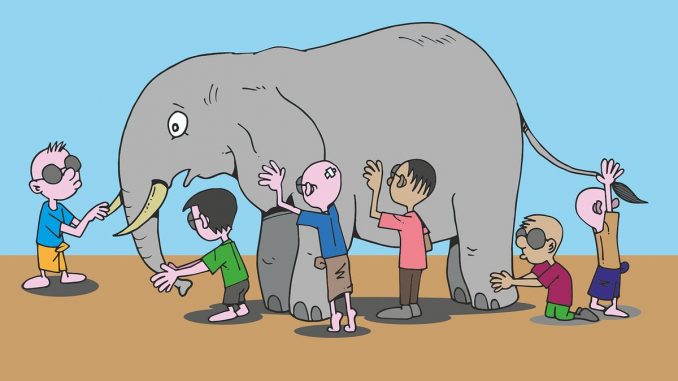
Table of Contents
What is Blinding in Research?
- Blinding, in research, mentions to a practice where the study population or the stakeholders involved in research are not permitted from knowing certain information or treatment, which may somehow influence the study findings.
- Blinding refers to covering up of certain information from one or more research participants in a clinical research study, most commonly a Randomized Controlled Trial (RCT) to reduce bias.
- Blinding is mainly carried out while conducting RCTs.
Use of Blinding in Research:
- Minimizes bias and maximizes validity of the results.
- Improves the reliability of clinical research results.
- Prevents conscious or unconscious bias in the design and during execution of a clinical trial.
- Allows investigators to control the exposure levels as needed.
- Gives an honest research findings.
- Allows a realistic statistical comparison.
- Helps to ensure unbiased ascertainment of outcomes.
Different Types of Blinding:
There are basically three different types of blinding used in researches:
1. Single blinding or single-masked:
- In single blinding, only a single stakeholder i.e. either the participant or the investigator is not informed of the nature of treatment the participant is receiving.
- A trial is called single-blind if only one party is blinded. Usually, the participant is blinded and is unaware of the treatment they receive.
2. Double-blinding or double-masked:
- Double-blinded study is defined as a study, in which both study population/participant and data collectors/investigators/researchers are not aware of the kind or nature of the treatment given and who receive the treatment.
- If both ‘the participants’ and ‘the study staffs’ are blinded, it is known as a double- blind study.
3. Triple blinding:
- A clinical trial or experiment in which neither the subject nor the person governing treatment nor an individual measuring the response to the treatment is aware of the particular treatment received by the subject is known as triple blind. Triple blinded studies also lengthen blinding to the data specialists.
- In triple blinding, the study participant, the data investigator or data collector and the data analyzer- all are blinded.
- Only the Principle Investigator of the research might know about the trial– may it be treatment, drugs or so on.
4. Unblinded or open-label:
- It is the exact opposite of blinding, where all the participant, clinicians, data collectors, specialists are well known about the treatment/intervention they receive.
Advantages & Limitations of Different Types of Blinding:
| Different types of blinding | Advantages | Limitations |
| Single blind
|
|
|
| Double blind
|
|
|
| Triple blind
|
|
|
| Unblinded or open level
|
|
|
Limitations of Blinding:
- More costly in time and money.
- Standardized interventions may be different from common practice.
- Many research questions are not suitable for blinding.
- Only applicable for some research questions.
References and For More Information:
https://www.medicinenet.com/parkinsons_disease_clinical_trials/article.htm
https://www.ncbi.nlm.nih.gov/pmc/articles/PMC2947122/
https://www.iwh.on.ca/what-researchers-mean-by/blinding
https://www.ncbi.nlm.nih.gov/pmc/articles/PMC3181999/
http://i-base.info/ttfa/8-clinical-trials-and-research/8-7-randomised-double-blind-placebo-controlled-trials/
https://www.sciencedaily.com/terms/double_blind.htm
https://jamanetwork.com/journals/jama/article-abstract/187750
https://medical-dictionary.thefreedictionary.com/triple+blind
https://www.exordo.com/blog/single-blind-peer-review/
https://onlinelibrary.wiley.com/doi/full/10.1111/j.1538-7836.2008.02848.x
https://methods.sagepub.com/Reference//encyc-of-research-design/n471.xml